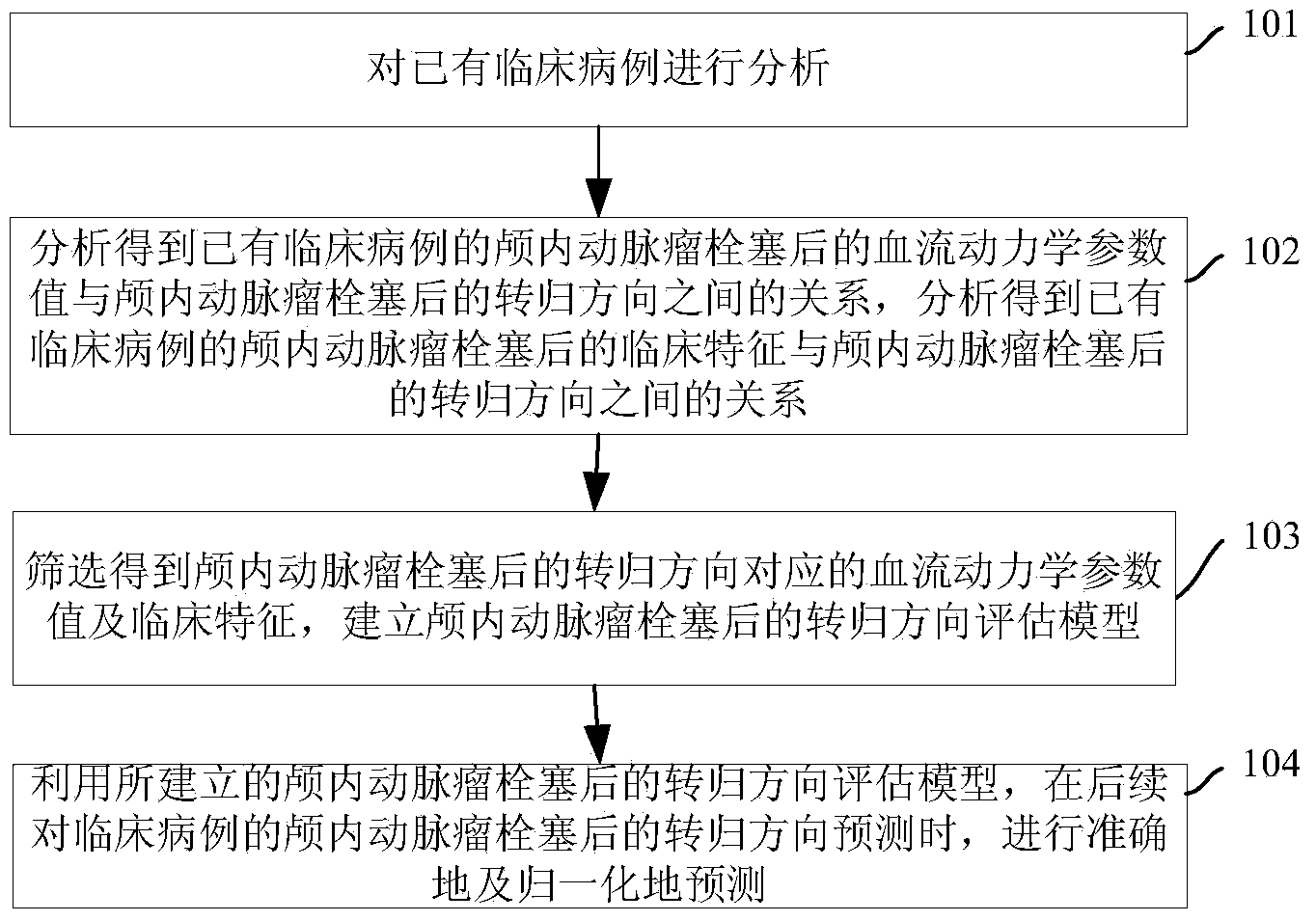Method and system for predicting recurrent risk after intracranial aneurysm embolization
An intracranial aneurysm and prediction system technology, applied in the field of clinical medicine, can solve the problems of increasing the stability of intracranial aneurysm embolization, lack of uniform standards, and insufficient understanding of the mechanism.
- Summary
- Abstract
- Description
- Claims
- Application Information
AI Technical Summary
Problems solved by technology
Method used
Image
Examples
Embodiment Construction
[0038] In order to make the object, technical solution and advantages of the present invention clearer, the present invention will be further described in detail below with reference to the accompanying drawings and examples.
[0039] In order to quantify and normalize the prediction of the outcome after intracranial aneurysm embolization in the embodiment of the present invention, the hemodynamic parameter values and clinical characteristics of the existing clinical cases after intracranial aneurysm embolization were analyzed and compared with the intracranial aneurysm embolization respectively. Determine the relationship between the direction of outcome after embolization of intracranial aneurysms, determine the hemodynamic parameter values and clinical characteristics corresponding to the direction of outcome after embolization of intracranial aneurysms, and establish an evaluation model for the direction of outcome after embolization of intracranial aneurysms , which is...
PUM
 Login to View More
Login to View More Abstract
Description
Claims
Application Information
 Login to View More
Login to View More - R&D
- Intellectual Property
- Life Sciences
- Materials
- Tech Scout
- Unparalleled Data Quality
- Higher Quality Content
- 60% Fewer Hallucinations
Browse by: Latest US Patents, China's latest patents, Technical Efficacy Thesaurus, Application Domain, Technology Topic, Popular Technical Reports.
© 2025 PatSnap. All rights reserved.Legal|Privacy policy|Modern Slavery Act Transparency Statement|Sitemap|About US| Contact US: help@patsnap.com


